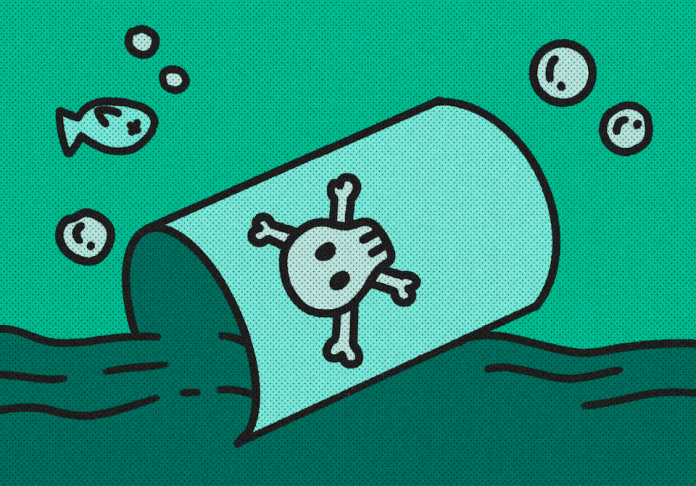Hailey Hill
Science and Technology Editor
In 1972, the use of an insecticide known as DDT (Dichlorodiphenyltrichloroethane) was banned in the United States after its devastating environmental consequences became apparent with the publication of Rachel Carson’s “Silent Spring.” After public outcry successfully brought about the ban, the public turned its attention elsewhere. It was never questioned as to how, or where, the DDT waste was disposed.
However, as we have previously learned with microplastics, industrial waste doesn’t simply disappear. Chemical waste settles into our ecosystems, often going unnoticed until it is already too late.
David Valentine, a scientist at UC Santa Barbara, was studying offshore methane seeps near Catalina Island when his equipment began picking up unusual signals from the ocean floor that, according to the Los Angeles Times, “gave him chills.”
Knowing this region has been marred by a dark history of unimaginably reckless waste dumping, Valentine was compelled to investigate.
Guiding his remotely-controlled equipment down to 3,000 feet below the ocean’s surface, Valentine found what he feared the most. Aged barrels littered across the ocean floor, appearing to be leaking. Upon further investigation, Valentine’s suspicion was confirmed: these barrels were leaking DDT and likely have been since they were dumped decades ago. Studies have revealed contaminant levels in the sediment on the ocean floor to be 40 times higher compared to other, more closely monitored contamination sites.
It is estimated that up to half a million barrels of DDT remain on the ocean floor, and even if every barrel was removed, the chemical has already permeated the ecosystem in irreversible ways. DDT-contaminated feeder fish is likely a contributing factor to the presence of DDT in the blood of larger marine animals, such as dolphins and seals. Due to the way DDT easily stores in fat, the compound stealthily accumulates in animal bodies in increasing amounts through a process called “biomagnification” as it moves through the food chain. Since DDT has an incredibly stable chemical composition, it will take generations for it to begin breaking down, and will not diminish in toxicity over time.
Valentine’s discovery is emblematic of decades of neglect perpetuated by industry leaders, the government, and even the general public. Reports readily exposed how the DDT ended up at the bottom of the ocean in the first place. According to the Los Angeles Times, a document from 1985, for example, reads that “each container was individually broken before disposal overboard. Drums containing chemicals were emptied and allowed to sink after holes were placed in the top, bottom and sides.”
Once these barrels disappeared under the waves, DDT became irrelevant in environmental dialogues — the public was no longer concerned, so industry and government were no longer being held accountable.
Despite the magnitude of this issue, Valentine remains hopeful that his discovery will reignite the public outcry seen decades ago and trigger real change in the way we treat our oceans.
Though the ocean floor may seem like a faraway, foreign place, “we rely on the health of these waters far more than we know,” explained Valentine to the Los Angeles Times.
Valentine also believes that his discovery is not enough to fully understand the issue: “[t]he fact that there could be half a million barrels down there … we owe it to ourselves to figure out what happened, what’s actually down there, and how much it’s all spreading.”











